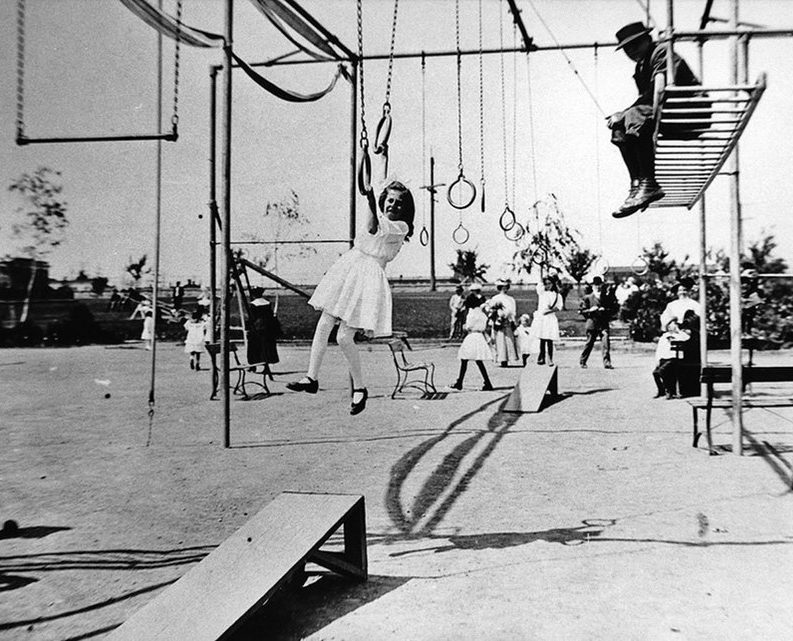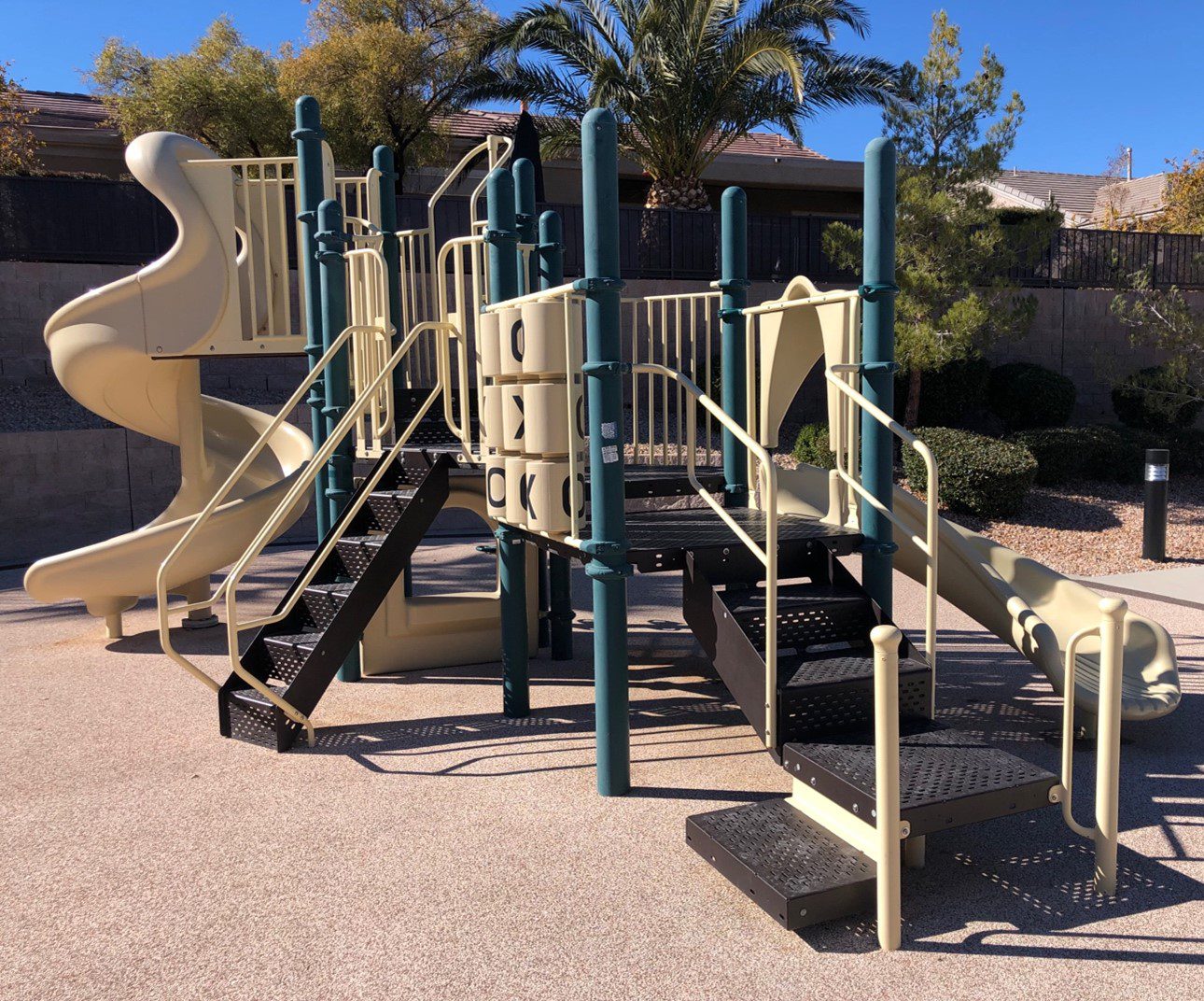Written By: Robyn Otty OTD, OTR/L, BCPR, FAOTA
Societal expectations and restrictions have produced norms to outline play experiences for children to enable a safe environment. In other words, play opportunities are scheduled by caring and concerning adults, and long gone are the times in which children play unsupervised, or ‘until the outside lights go on.’ As such, invaluable motor and sensory experiences are largely facilitated, led, and structured by adults. Thus, the inherent drive for children to seek desirable opportunities and exploration of motor and sensory play may be unintentionally sidelined by adults.
 For example, observe how play environments have changed over time. Teeter-totters, manual spinning platforms, chain wall, swings, and even monkey bars are a thing of the past due to the high safety risk. Despite the danger, this play equipment encourages postural control, sustained upper body coordination, strength, and proprioception through prolonged arm and hand position while promoting visual stimulation through exposure of changing visual processing while moving through space. To illustrate how play equipment has changed over the years, you can see how ‘less is better’ as indicated in the first picture, compared to the second, which represents the prescriptive way in which play is guided within today’s playgrounds.
For example, observe how play environments have changed over time. Teeter-totters, manual spinning platforms, chain wall, swings, and even monkey bars are a thing of the past due to the high safety risk. Despite the danger, this play equipment encourages postural control, sustained upper body coordination, strength, and proprioception through prolonged arm and hand position while promoting visual stimulation through exposure of changing visual processing while moving through space. To illustrate how play equipment has changed over the years, you can see how ‘less is better’ as indicated in the first picture, compared to the second, which represents the prescriptive way in which play is guided within today’s playgrounds.
 Angela Hanscom, a pediatric occupational therapist and author to the book Balanced and Barefoot emphasizes how the opportunity to create free play, in the outdoor environment can not only support visual and fine motor skills but promote emotional stability and creativity. Ms. Hanscom also indicated the growing trend of children demonstrating lower core strength.
Angela Hanscom, a pediatric occupational therapist and author to the book Balanced and Barefoot emphasizes how the opportunity to create free play, in the outdoor environment can not only support visual and fine motor skills but promote emotional stability and creativity. Ms. Hanscom also indicated the growing trend of children demonstrating lower core strength.
As therapists, we can support children with safe, unstructured time to facilitate visual and fine motor opportunities through games and experiences within our treatment session. Through natural opportunities to play outside with siblings if doing home visits or even facilitating a play session at a local park, we can educate parents to look at the environment in their daily experiences to support postural stabilization, coordination, and visual opportunities. To specifically address visual opportunities in an outdoor, you can play “I Spy” or create a scavenger hunt, to support scanning and depth perception processing. Even games traditionally played inside, can create an entirely different motor and visual opportunities such as “Duck-Duck-Goose” or “Freeze Dance.”
Additional contributor to visual and fine motor development is the existence of prolonged primitive reflexes. The “Back to Sleep” campaign has improved the frequency of Sudden Infant Death Syndrome (National Institute of Health, n.d.), but may have inadvertently discouraged supervised prone positioning. In other words, the position known as ‘tummy time’ may have also been compromised by the explosion of passive positioners and impacted the child’s ability to fully integrate primitive reflexes known to integrate while prone. Reflexes are known to support both motor and visual experiences. As a result, asymmetrical tonic neck reflex and symmetrical tonic neck reflex are more pronounced and present in neuro-typical developing children (Gieysztor et al., 2015).
To address and support reflex integration, therapists can provide education to create ways in which children can be given the experiences their brains and bodies need to ensure visual and motor development. Interested in learning more? Be sure to check out my upcoming webinar on March 29th, Improving Visual and Fine-Motor Skills Using Neuroplasticity.
References:
Gieysztor, E. Z. , Sadowska, L., Choinska, A. M., & Paprocka-Borowicz, M. (2018). Trunk rotation due to persistence of primitive reflexes in early school-age children. Advances in Clinical and Experimental Medicine, 27(3), 363-366.
Hanscom, A. J. (2016). Balanced and barefoot. New Harbinger Publications
National Institute of Health . (n.d.). Progress in reducing SIDS. https://safetosleep.nichd.nih.gov/activities/SIDS/progress
Explore online continuing education courses from Robyn below:
Improving Visual and Fine-Motor Skills Using Neuroplasticity
